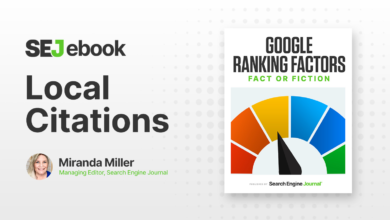Build on Country Specific Domain Or Use Existing Site?

John Mueller of Google has provided answers to the problem of creating international sections within an existing site or creating entirely new ones. I asked an international SEO what he thought about this and he shared insights on what he feels is the best course of action for SEO.
Do you use a ccTLD for international websites?
Someone asked the question about the best way to expand internationally.
He explained that they had a strong research presence in the United States, but wanted to expand to other countries.
Because the main site is so powerful, there is a perception that the site can give a head start to international versions created within the dot-com version of the site, since those versions will not be created on an undefined domain.
But there are many good reasons to build new sites on domains that match the countries they target.
These types of domains are like .uk, .de, and .jp and are called country code top-level domains (ccTLD).
John Mueller of Google discusses international SEO
The person who asked the question recounted his situation:
“…we started building in Canada and the UK. And today we’re kind of at a crossroads.
Should we go to ccTLDs or just keep it under dot com?
We are a real estate company, so our pages are site specific.
We’ll probably end up in about a dozen countries…
So you might think the process is able to take advantage of the ability to target locally in Search Console with ccTLDs, since I can’t do that with global dot com.
… So I was just wondering, is there an advantage
Going one way or the other? Or is it easier for Google somehow? “
Multiple considerations for expanding international business
Google’s John Mueller answered without hesitation that there are multiple considerations and then listed those considerations.
Mueller replied:
“I think there are several things at play.
It’s also probably an aspect of having multiple sites vs. having a really solid website…if you’re talking about a dozen different sites, that’s probably less of an issue. Maybe this thing works.
The other thing with geotargeting, we use that when we realize that people are looking for something local.
So either way, I’m going to try to make sure we can figure out what geotargeting to use for the website.
And ccTLDs are very visible. So I think that’s a good approach.
- Subdomains are an option.
- Subdirectories would be an option.
URL parameters to indicate the different international sections
John then discussed what not to do, advocating the use of URL parameters to indicate which country the department is targeting.
Follow Mueller:
What I wouldn’t do is just kind of use URL parameters or something where it’s like, well, you have your main global website and you can search for an individual country. Then somewhere in the URL that country is mentioned as well.
Because that basically means we can’t geotarget the location at all.”
International expansion may depend on marketing strategy
Mueller then suggested that the way to answer which way to go is to consider what the choice would mean to the consumer, and how the company might be perceived by the target audience domestically.
The person asking the question states that the US site is 40 million pages and the Canadian site will have about 500,000 pages. He also stated that because the content is site-specific, only 5% of the pages have a one-to-one match between the US and Canadian versions.
Mueller replied:
“…I think from a technical point of view, they’d all be kind of equivalent. It kind of might be from an SEO ranking point of view you might have some advantage by kind of building on your existing domain.
But I think it also depends a little bit on your marketing goals.
If you really want to put this stuff like that, we’re the real estate company for Canada, you kind of want to have your own domain.
If you want to put it this way, we’re a global company and we also do Canada, then having that within your existing domain could be a good thing.
So I think from a technical standpoint, like all of those options are open. The way you go about it is kind of like a strategic decision.”
SEO considerations for expanding into new countries
I asked Michael Bonfils (LinkedIn profile), a highly regarded international SEO expert, what are his thoughts on the pros and cons of expanding internationally on an existing site or with ccTLDs. I asked Michael because he has extensive experience working in the Internet industry since the mid-1990s.
Building the site on dot com is a viable approach, Michael said, especially because of Google’s excellent ability to use the hreflang attribute to understand what language a web document is targeting. But he also shared his reasons for favoring a ccTLD.
Michael shared the following thoughts:
Technically, with the dot com and hreflang’s excellent setup against a ccTLD, both are fine and both will rank.
With the technical advances in Google’s algorithm, I wouldn’t be surprised if these days you prioritize dot com with a solid hreflang attributable directory structure because of the extensive global link flow. “
He set aside considerations about Google and moved on to considerations of how consumers interact, which ultimately decides whether or not a strategy is successful.
Michael noted:
However, I tend to lean towards and advocate for a suitable ccTLD.
A ccTLD often boosts consumer confidence, so participation will improve.
For example, German consumers can be wary of buying anything that is not German. This makes it difficult for companies with an established non-German presence to compete.
Not only do you have to prove that you have better quality than an equivalent German company, you can’t risk lowering confidence signals by not getting a German ccTLD.
In the German market expansion example, you want to be as local as possible and as German as possible.
Outside of these trust signals, there is the bond factor to consider. German sites considering linking to you from within Germany have a strong preference over links from outside Germany.”
International expansion and links
After that, Michael turned his attention to the links. Links can be the foundation of a successful search presence and help launch a site to the top of search results.
advised:
“It is much easier to earn publisher links with a ccTLD than with .com /germany/. Using a ccTLD increases link probability.
So technically it’s easier with hreflang and technically you can still rank and compete.
But keep in mind the goals of conversions and usability, building trust in site visitors and gaining traction in the international market.”
the quote
Building separate websites when expanding internationally?
Watch the 20:20 minute mark in the video




